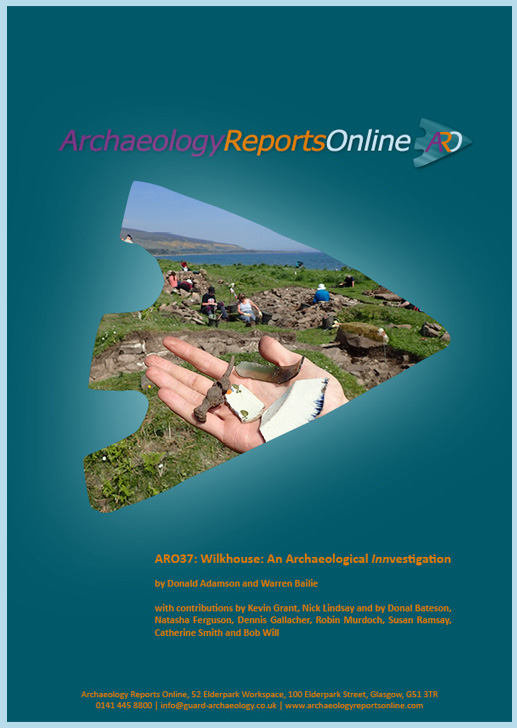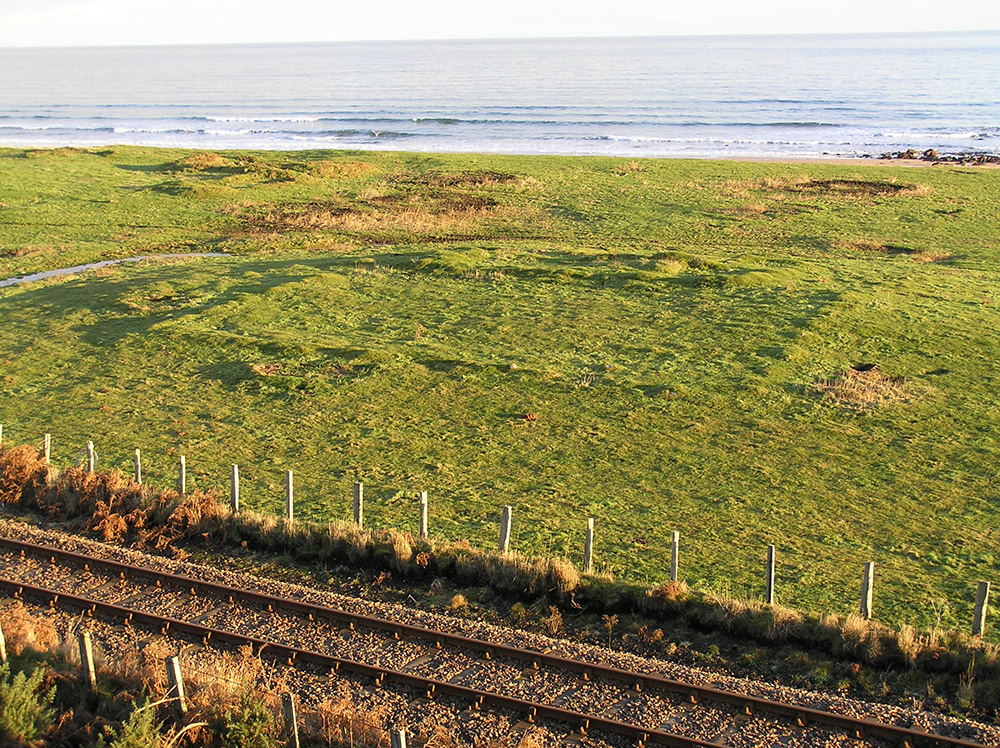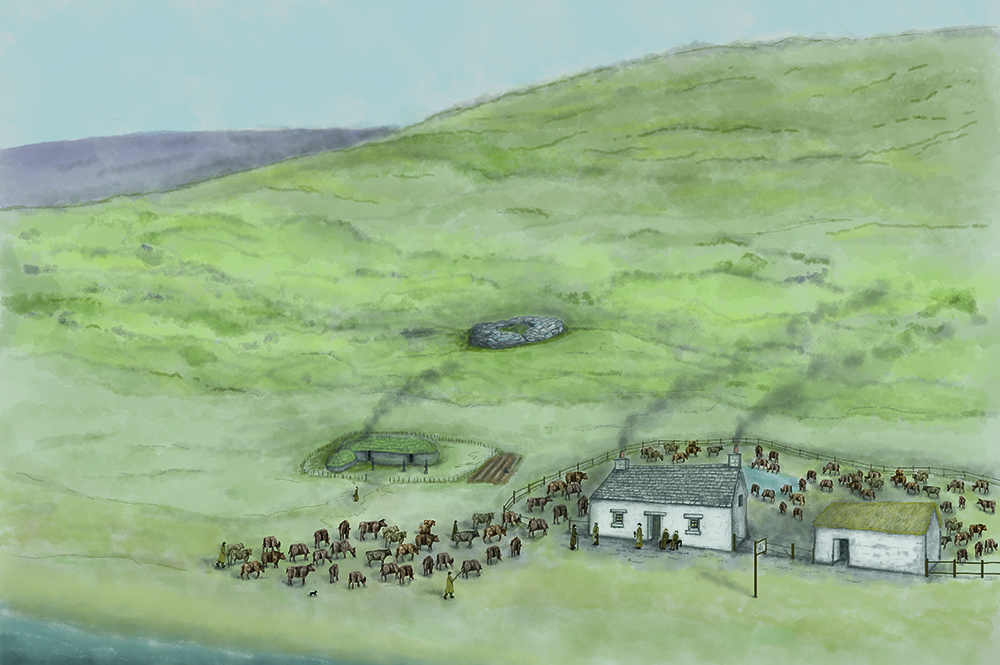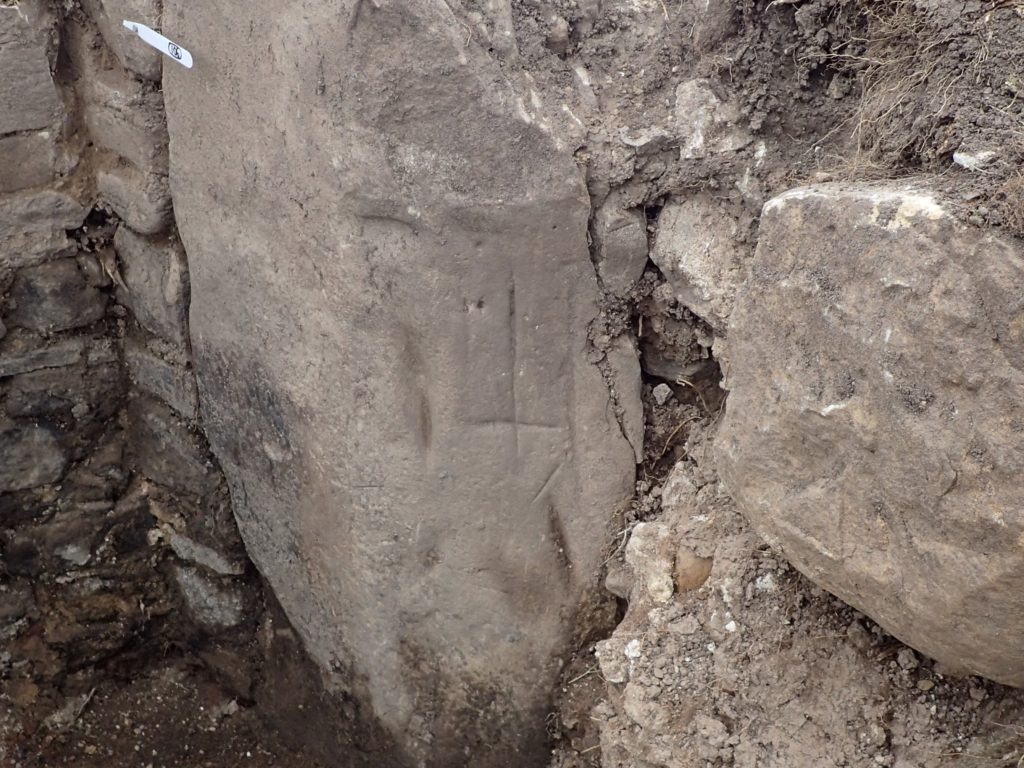New insights into Highland life immediately before the Sutherland clearances of the early nineteenth century, have just been published in Archaeology Reports Online.

The investigations at Wilkhouse in Sutherland, led by GUARD Archaeology, were centred upon an eighteenth-century drovers’ inn and its neighbouring buildings. The evidence reveals a place pivotal to the local economy, where the continuity of settlement within the Highlands was in the process of developing into modernity before being cut short by the clearances instigated by the Sutherland Estate.
‘We revealed evidence of inhabitation here over a long period,’ said GUARD Archaeologist Warren Bailie, who directed the excavation. ‘The stone foundations of an earlier structure were found under the north-east gable of the inn while the coin assemblage testifies to the long-term use of the drove road at least as far back as the late sixteenth century. Earlier antiquarian finds, nearby, indicate occupation in the Norse, Pictish and Iron Age periods. The excavation also found a buried Neolithic occupation layer below one of the inn’s outbuildings.
The inn at Wilkhouse was a statement of modernity and affluence when built in the eighteenth century. It was constructed with harled stones, lime mortar bonding, glass windows, double chimneys and a slate roof. The level of investment suggests that there was ample passing trade to warrant the spend and was very much in contrast to many other drovers’ inns in Scotland, which were often a longhouse built of drystone with wooden shuttered windows, low walls, central hearths set on the floor and a turf or thatched roof.

The process of change also brought about its demise. The roadway was moved up the hillside and out of sight. Competition from newer inns in Brora and Helmsdale would have been damaging. However, underlying these lay the demands of the Sutherland Estate. The Kintradwell estate, recently subsumed again into Sutherland ownership after a period in the hands of the Gordons of Carroll, was cleared of its people in 1819. The inn was not be spared and by the coming of the railway in 1870 had sank into obscurity and was little more than a ruin.
‘A revealing description of Wilkhouse Inn in 1802 written by the Rev Donald Sage gives a picture of what was lost when the inn was forcibly closed in the name of improvement’, said Donald Adamson:
“We stopped for refreshment at an inn below Kintradwell, called Wilk-house, which stood close by the shore. This Highland hostelry, with its host Robert Gordon and his bustling, talkative wife, were closely associated with my early years, comprehending those of my attendance at school and college. The parlour, the general rendezvous for all comers of every sort and size, had two windows, one in front and another in the gable, and the floor of the room had, according to the prevailing code of cleanliness, about half an inch of sand upon it in lieu of carpeting. As we alighted before the door we were received by Robert “Wilkhouse” or “Rob tighe na faochaig” as he was usually called, with many bows indicative of welcome, whilst his bustling helpmeet repeated the same protestations of welcome on our crossing the threshold. We dined heartily on cold meat, eggs, new cheese, and milk. “Tam,” our attendant, was not forgotten; his pedestrian exercise had given him a keen appetite and it was abundantly satisfied.”
‘Thus, we meet “Rob of the House of the Whelks” as he was known in the district,’ said Donald Adamson. ‘Alongside him was his wife Kirsty Fraser, who may have been the daughter of the previous innkeeper, William Fraser. Donald Sage’s meal might have been representative of standard fare at Wilkhouse. Milk, cheese and eggs supplementing cuts of mutton and beef, although not necessarily the most prestigious cuts. However, the archaeological evidence reveals that the diet appears to have been more varied, with rabbits, birds (including auks) and fish on the menu. In addition, marine shellfish and notably whelks were eaten.’

A visitor around 1800 would have seen the inn as distinctly modern in comparison with the three vernacular buildings surrounding it. It was representative of modernity and all that that implied at a time when farming patterns and landscape use were changing across the Scottish Highlands,’ added Donald Adamson, whose research into drove roads instigated the excavation. ‘Every other structure referred back in time to building methods and knowledge which had gradually accumulated in the locality. In a sense therefore, the inn represented something intrusive in the landscape.’

The new archaeological evidence found on site weave a rich picture of life in the years leading up to 1819. A curious inverted cross was carved into one of the hearth stones and may have been intended to deter witches flying down the chimney. Shards of ‘firing’ or ‘shot’ glass evokes a picture of toasts being exchanged after a meal or drinking session, with the noise of the glasses being slammed down on a table echoing through the inn. The majority of coins relate to the last phase of Wilkhouse operating as an inn. Most are halfpennies of the reigns of George II and George III, although there is also a Parys Mine token, valued at one penny, dated 1788. The distribution of finds indicate that many were dropped in an enclosure at the rear of the inn which might have been the area for unsaddling.
Four earlier coins suggest that the site was occupied in the seventeenth century and before. The earliest coin is a billon hardhead (two pence Scots) of James VI, dated 1588, which seems to have been dropped in the 1590s. There are then two ‘turners’, one a Scottish copper turner of the 1640s, also worth two pence Scots, and the second a French royal issue ‘double tournois’, dated 1628, of Louis XIII. The probability is that both circulated through much of the seventeenth century. The fourth coin is from the reign of Charles II, dated 1681 and is an Irish copper halfpenny.
Personal items recovered during the excavation including pins, buckles, strap fittings, thimbles and a part of a comb add colour to the domestic context of the buildings. Two military buttons of the Sutherland Fencibles, one possibly belonging to an officer, suggest that the inn was a meeting place for a company of soldiers in the period 1793 to 1801, when Britain was being defended against the possibility of French invasion by militia.
The trade patterns which had sustained Wilkhouse Inn, up to and through the Napoleonic wars, with its cattle stance to one side, were about to suffer a convulsive shift as ‘Improvement’ took a grip in the northern Highlands. An agricultural economy based on subsistence farming carried on by a network of sub-tenants, which relied on the export of black cattle as the cash crop, was about to be replaced by huge sheep farms, which were let directly to the highest bidders without consideration for family ties. In the case of Sutherland, this involved the movement of most of the people from the interior of the county to the coast, to the Lowlands and abroad. The cattle drovers were replaced by shepherds. The lands were cleared, the buildings forcibly abandoned, roofs removed and the people scattered.
The excavation was undertaken in 2017 for Dr Donald Adamson who had completed a study on droving routes in the Scottish Highlands. The excavation involved collaboration between Clyne Heritage Society, the University of Glasgow and GUARD Archaeology, and provided training for early career archaeologists and also volunteer opportunities for members of the local and wider community.
ARO37: Wilkhouse: An Archaeological Innvestigation by Donald Adamson and Warren Bailie is freely available to download from the ARO website – Archaeology Reports Online.
